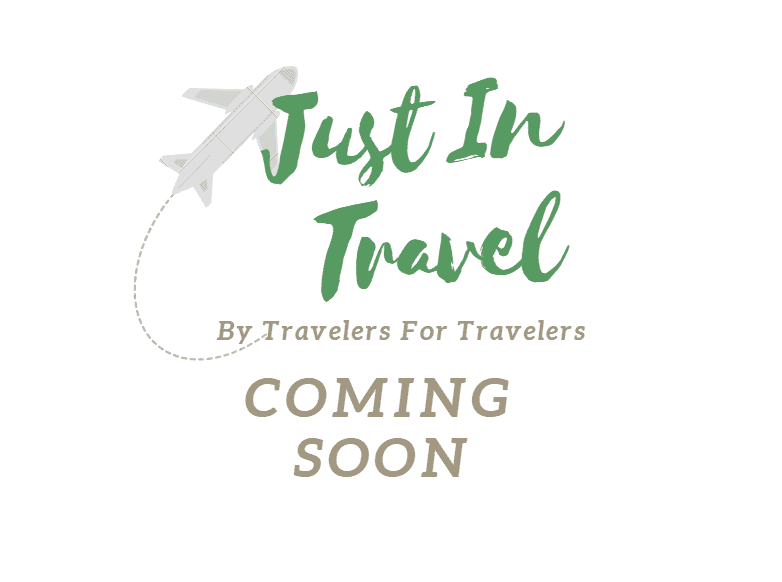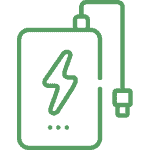Colombia Backpacking and Digital Nomad Travel Tips
Table of Contents
My Colombia Story

Colombia at a Glace
Spanish
Colombian Peso
Local Banks
Bandeja Paisa
Yes
Movistar, Claro and Tigo
Yes
Check CDC
A and B
InDriver
December to March
+57
Yes
No
Yes
Credit Cards
Late August to November and in May
123
Related Posts
Looking For Friends Or Have Questions? Check our whatsapp chats , Dont see a group? Check “More Travel Whatsapp Groups‘

The Complete Cambodia Digital Nomad Visa Guide (Updated 2024)
Did you know that you can apply for a Cambodia Digital Nomad Visa, which enables remote workers to work and travel in the country? How to apply and requirements.

Top 5 Things to See and Do in Colombia
1. Bogotá
2. Medellín
3. Cartagena
4. Cali
5. Santa Marta
Other Things to See and Do in Colombia
1. Popayán
Also called The White City, Popayán is an impressive colonial town, full of churches, monasteries, and mansions. As several universities run in this city, everything here is quite affordable. Head to the Popayán viewpoint to watch the beautiful sunset.2. San Andres Island
It is a seahorse-shaped island located near the coast of Nicaragua. This destination is ideal if you love seafood, beaches, and lounging in the sun. Visit the island to dive into the clear blue waters or simply enjoy the year-round idyllic weather.3. Manizales
Nestled between Medellín and Bogotá, Manizales is home to several prominent Colombian universities and some finest restaurants. The highlight here is to hike Los Nevados – a mountain range with huge snow-capped peaks.4. Barranquilla
The fourth-biggest city in Colombia, Barranquilla is known for its incredible Carnival when the streets are full of parades, drinking scenes, live music, and dancing. Besides, you can visit El Museo del Caribe (a museum highlighting the history of the Caribbean coast) and attend an exhibit for Gabriel García Márquez (the eminent author behind Love in the Time of Cholera).5. Salento
It is a small resort town located near the Andes Mountains. Salento is famous for its coffee estates and beautiful landscapes. The main highlight here is hopping on the shared jeeps and traveling through the swaying lines of the tallest palm trees known to humans.6. Caribbean Coas
The beaches here are full of travelers who end up staying here to enjoy the relaxed atmosphere. The best beach towns to visit here include Palomino and Costeño beach.7. Minca
Minca sits in the foothills of the Sierra de Santa Marta Mountains and is surrounded by beautiful waterfalls, thick forests, interesting wildlife, and fantastic views. This town is a hotspot for tourists looking for cooler temperatures.Typical Costs

Transportation
In Colombia, the cost of a taxi ride is relatively more than public transport. On average, a person pays up to $7 a day on local transportation here. Transportation between the cities or towns usually costs an average of $65.

Accommodation
In big Colombian cities, most hostel dorm rooms cost around $12 per night, whereas smaller towns have options for less than $10 per night. Private hostels offer accommodation for at least $16, though, in peak season or famous areas, you’ll probably spend double. Budget hotel rooms start at $20 a night. Places located near the coast offer rooms for $35 per night. To get a room in boutique hotels, expect to pay hundreds of dollars per night. Airbnb is available with shared accommodation prices beginning at $10 per night and $30 per night for an entire home or apartment in major cities. Not many campgrounds can be found in the country, but some hostels let the travelers pitch a tent on their property and charge them accordingly.

Food
In the major cities, a restaurant serves a meal for almost $5, whereas the local food in the countryside costs only a couple of dollars. Western-style food typically costs $10 per person if you have fast food from McDonald’s or Subway. Cocktails in Colombia cost around $6. while the beer can be bought for less than a dollar. Grocery shopping is the cheapest option, costing up to $30 per week if you plan to get your own groceries.

Activities
Entertainment and outdoor activities in Colombia usually cost around $12 on average per person daily. It includes the amount paid for entrance tickets to attractions, day tours, and other sightseeing expenses.
Suggested Budget
Wondering how to make your budget for traveling around Colombia? Use the following chart to get some idea of how much you’ll be spending daily during your stay:
Budgeting Tips
1. Eat and drink like local
You can eat on a budget by sticking to local food. Many cheap food items like empanadas can be eaten as snacks for a few cents. Another popular item, Ceviche, is around $5. You can find meals in the countryside for just a couple of dollars. When it comes to drinking, you can skip the cocktails and have a beer for almost $2.2. Don’t book hostels on the Caribbean coast
Most hostels located on the Caribbean coast are pretty expensive and don’t offer too many nice facilities. Instead, you should look for accommodation options elsewhere.3. Pay the lower airline surcharge
Airlines often charge outsiders a higher ticket price. So, load up the Spanish version of the websites and book your flights to enjoy cheap fare like Colombians.4. Go for free walking tours
Many of the famous attractions in Colombian cities are closely located. So, it is a good way to see those sites on foot and save some money. Some great walking tours are Free Walking Tour Bogotá and Real City Tours Medellin.5. Couchsurfing
Couchsurfing is always a good choice to save some money. Not only you get a living space for free, but you also get local guidance and instructions to make your trip even greater.6. Cook your food
While local Colombian food is already inexpensive, you can save even more money by grocery shopping. You can get essential grocery items for almost $30 a week and cook your food in your hostel kitchen.7. Use Uber
Traveling on Uber is by far the cheapest way to get around most of the Colombian cities. You can visit many places in a single day by paying even less than half of the taxi fare.8. Bargain with taxi drivers
You need to haggle with the driver if you use the taxi to travel around. Taxis usually don’t come with a meter in Colombia, so it is better to bargain a little before getting in the car.Where To Stay
From budget-friendly hostels to upscale hotels, there is an extensive range available in Colombia, suiting everybody’s needs. Here are some of the recommended places to stay in Colombian cities:
Hobu Hostel
Hotel
Bogotá
TBD
Los Patios Hostel Boutique
Los Patios
Medellín
TBD
República Hostel
TBD
Cartagena
Nomad Coworking And Working Spots
You cant be a digital nomad without wifi. So below are some spots where one can work comfortably. Dont forget to check my nomad lunch break section for places you can still visit and/or work from during lunch. #nomadworkspace
Bogota
Coming Soon
Medellin
Coming Soon
Cartagena
Coming Soon
?
Coming Soon
Tikal
Coming Soon
Other
TBD
Nomad Lunch Breaks
Balancing work and exploring can be tough, here are some activities or places you can visit during a lunch hour. You will see the words hotspot, wifi, or break which indicates what you can use to work there, or if you cant and its time for a work break. #nomadlunchbreak
Bogota
 Claro: 20 mpbs
Claro: 20 mpbs 1.5mpbs
1.5mpbsMedellin
Coming Soon
Cartagena
Coming Soon
?
Coming Soon
?
Coming Soon
?
Coming Soon
How To Get Around
Plenty of travel options are available in Colombia, each having its own positives and negatives depending on your budget, travel destination, and personal preferences. Here are the most common modes of transport used in Colombia to get around:

Public transport
Local buses are pretty cheap, costing less than a dollar for traveling between cities and towns. The metro operating in Medellín costs a few cents for a one-way trip. Taxis are also quite affordable, mostly costing up to $5. Uber is a cheaper option than taxis as it costs a maximum of $5 for traveling anywhere within the city.

Colectivo
Run by private owners, it is a shared taxi, minibus, or a large jeep used for short journeys, especially between towns. Though they are faster, they cost much more than public transport. Many travelers approach colectivo as they pass on the streets.

Trains
Though Colombia has a nationwide rail track network, the intercity passenger services are virtually non-existent.

Bus
Buses are a great option to travel between the cities. Many companies like Expreso Palmira, Bolivariano, and Trejos offer these services. A bus ride from Bogotá to Medellín costs around $25, while the trip from Bogotá to Quito, Ecuador costs up to $60. On average, you pay a maximum of $12 if you are traveling from one major city to another.

Flying
A great air network connects major Colombian cities, even those in the Caribbean coastal region. Budget airlines are mostly inexpensive than buses operating in the country. VivaColombia is a great option to find super cheap deals. A flight between two main cities usually costs around $40, which is quite affordable.

Hitch Hiking
Hitchhiking in Colombia is quite uncommon and unsafe. Therefore, it is not recommended, especially for solo or female travelers.

Resources
https://12go.asia/en : This link will get you buses, trains, taxis, ferries and flights for most major routes in Asia.
When To Go



Though Colombia is a year-round destination, December to March is regarded as the best time to visit. These are the driest months with warm, sunny days, so bigger crowds and higher prices are expected during this period. Another dry season occurs in August if you want to travel during the off-season. Rainy season differs per region. In the Andes region, the rainy season brings daily heavy showers from May to July and then again from October to December. Low-lying areas like Southern Colombia experiences constant rainfall, but showers never last very long. In the highlands, the weather is usually cooler, especially at night.
Common Questions About Colombia
Yes, Colombia has made significant progress in terms of safety in recent years. However, like any other destination, it is important to take basic precautions and stay informed about the current situation.
The best time to visit Colombia is during the dry season, which typically runs from December to March and July to August. However, Colombia’s diverse geography means that weather patterns can vary across different regions.
Some popular destinations in Colombia include Bogotá, Cartagena, Medellín, the Coffee Triangle (Pereira, Armenia, and Manizales), Tayrona National Park, and the Lost City (Ciudad Perdida).
Most visitors to Colombia need a valid passport with at least six months of validity remaining. The specific visa requirements depend on your nationality, so it is advisable to check with the Colombian embassy or consulate in your country.
The currency in Colombia is the Colombian peso (COP). While US dollars are widely accepted in tourist areas, it is recommended to have some Colombian pesos for smaller establishments and local markets.
Colombia has a well-developed transportation network. Domestic flights are a convenient option for long distances, while buses and taxis are commonly used for shorter journeys within cities. Ride-hailing apps like Uber and local service providers are also available in major cities.
It is advisable to consult your doctor or a travel health specialist before visiting Colombia to ensure you are up to date on routine vaccinations. Depending on the regions you plan to visit, additional vaccinations such as yellow fever or malaria prophylaxis might be recommended.
Colombian cuisine is diverse and varies by region. Some popular dishes include bandeja paisa (a hearty platter with beans, rice, meat, and more), arepas (cornmeal patties), sancocho (a traditional soup), and empanadas (stuffed pastries).
While tap water is generally considered safe to drink in major cities, it is recommended to drink bottled water or use water purification methods to avoid any potential stomach discomfort, especially in more remote areas.
Colombians are known for their warm and welcoming nature. It is customary to greet people with a handshake and maintain eye contact during conversations. Politeness and punctuality are valued, and it is common to address others with formal titles such as “Señor” (Mr.) or “Señora” (Mrs.).
How To Stay Safe and Aware of Scams
In general, Colombia is a safe destination to travel around. But there is still a lot of petty crime in the country, so it needs caution. By following these safety tips, all kinds of issues can be avoided.
1.Don’t give papaya
The Colombian phrase no dar papaya (literary meaning don’t give papaya) means don’t make yourself an easy target by flashing your valuables or leaving your possessions open on public transport. Whenever in public, keep an eye on your belongings.2. Keep an eye on your drink
Drink spiking happens in Colombia from time to time, especially in big cities. So, never accept a drink from any stranger and don’t leave your drink unattended in nightclubs or bars.3. Check ATMs for tampering
Firstly, avoid using ATMs on empty streets or during the night. But if you need to use one, check the ATM first to confirm that it hasn’t been tampered with. It is a scam in Colombia to install fake keypads and then clone the inserted cards. If you find anything shady, leave immediately.4. Only use official taxis
Though several taxis are available in Colombian cities, choosing only the official ones is advised. Use the taxi apps like Cabify. Avoid getting one off the deserted street. You can also ask your hostel or restaurant to order a taxi for you.5. Don’t always trust a police officer
There have been many reports of criminals masquerading as Colombian police officers and inspecting passports and money on the street. If this happens to you, call the nearest uniformed cop over or ask to talk to one. This will help!6. Beware of pushy street vendors
If any vendor flashes items in front of you, become active as it is often a part of the distraction technique. Keep an on your belongings and be aware of your surroundings to avoid any theft.7. Refuse drug offers
While drug tourism is common in Colombia, it is better to avoid taking or buying drugs, cocaine in particular. Buying or using cocaine is illegal in Colombia. Refuse random offers of drugs on the streets as it is most probably a setup.8. Avoid visiting border towns
The regions within 20km of the Ecuadorian and Venezuelan borders experience increased levels of drug-related crime. Avoid these areas totally.9. Travel insurance
The most important tip to stay protected against illness, theft, and injury is to purchase travel insurance. It is the ultimate protection in case anything goes wrong.Packing List
If you are heading to Colombia and need some suggestions on what to pack for your trip, read the following section:

Shorts

Long-sleeved shirts

Underwear

Medicine: Anti-diarrheal, antibiotics, malaria pills

jeans

Flip flops

Toiletries: Shampoo, body wash, toothbrush, razor

Luggage locks

Swim Trunks

Comfortable Sneakers

Quick dry towel

Laundry Bag

Shirts

Socks

Long-lasting Dedorant

Hand Sanitizer

Power Bank

Sarong

Sun Glasses

Powerful Sun Screen

Reusable water bottle – to stay hydrated!

Mosquito Repellent

Umbrella and raincoat

Mini first-aid kit
